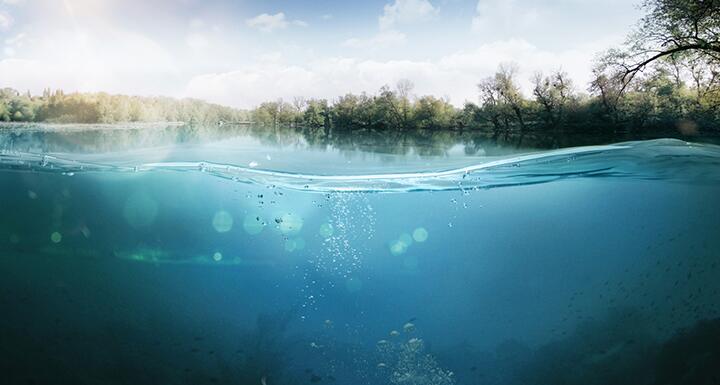Sixteen months after the United States Court of Appeals for the Sixth Circuit entered its Order halting application of the 2015 Clean Water Rule ("Rule") nationwide, President Donald J. Trump signed an Executive Order directing the United States Environmental Protection Agency ("EPA") and the Army Corps of Engineers ("Corps") to withdraw and rewrite the Rule. Since that time, the EPA and the Corps have been taking steps in a complicated process to deliver the certainty and predictability long desired but never experienced.
Background
The Rule was the product of years of muddling within the EPA and Corps to define what qualifies as a water of the United States ("WOTUS") subject to the agencies' jurisdiction under the federal Clean Water Act ("CWA") after the United States Supreme Court complicated the determination process in 2006 with its split decision in Rapanos v. United States.
In Rapanos, the filling of ditches for development by a Minnesota property owner raised the question of whether the CWA applied to the ditches that were not traditional navigable waters and were not necessarily holding water throughout the year. The nine sitting justices voted 4-1-4, leaving no controlling opinion. Subsequently, when appellate courts applied the Rapanos opinion to other waters in different states across the country, Justice Kennedy's lone opinion more often than not controlled. He wrote that jurisdiction under the CWA extends to bodies of water and wetlands, alone or combined with other similarly situated lands, that significantly contribute to the chemical, physical, and biological integrity of traditional navigable waters. This became known as the "significant nexus" test.
For the next nine years, application of the significant nexus test on a case-by-case basis by the EPA and Corps was frustrating and unpredictable for the regulated community. In 2008 and 2011, the agencies published guidance documents in an attempt to clarify their approach, but opposition to the subjective standards resulted in the guidance being withdrawn.
As a result, in August 2015, the EPA and the Corps published the Rule to clarify the definition of WOTUS, minimize case-by-case evaluations, and provide predictability for the regulated community while also protecting wetlands and water supplies. However, the rollout of the Rule didn't please anyone. Challenges were filed across the U.S. by several states and industry groups, including development and agribusiness, who saw the Rule as expanding federal jurisdiction over private land, and by environmental interest groups who felt the Rule failed to protect enough water sources.
In October 2015, the United States Court of Appeals for the Sixth Circuit entered its Order halting, or staying, implementation of the Rule nationwide. In January 2017, the United States Supreme Court granted a petition to hear an appeal of the Sixth Circuit's ruling that it had jurisdiction to hear the combined challenges to the Rule. Pending that review, the agencies continued to apply the case-by-case significant nexus analysis.
Executive Order to Restore the Rule of Law, Federalism, and Economic Growth
On February 28, 2017, President Trump issued an Executive Order directing the Administrator of the EPA, Scott Pruitt, and the Assistant Secretary of the Army, Douglas Lamott, to review the Rule for consistency with the President's stated policy "to ensure that the Nation's navigable waters are kept free from pollution, while at the same time promoting economic growth, minimizing regulatory uncertainty, and showing due regard for the roles of the Congress and the States under the Constitution." After such review, the EPA and the Corps are to publish, for notice and comment, a new rule that either rescinds or revises the Rule.
The Executive Order also directs the Administrator and Assistant Secretary to consider interpreting the term "navigable waters" in the manner expressed by Justice Scalia in the Rapanos opinion. Justice Scalia's plurality opinion in Rapanos extended CWA jurisdiction only to those waters that were traditionally used in commerce, are interstate, are relatively permanent and connected to traditional navigable waters, and are wetlands with a continuous surface connection to those waters such that it is not apparent where those waters end and the wetland begins. Modifying the Rule in this manner would narrow the scope of waters subject to jurisdiction under the CWA and also retract some of the coverage broadened under the significant nexus test.
Revising or rescinding the Rule and implementing a new definition of WOTUS will take time. The agencies must follow the federal Administrative Procedure Act ("APA") to withdraw the Rule in a process that is, in essence, the reverse of enacting the Rule. And, since any new version of the Rule will narrow jurisdiction of the CWA, environmental groups are expected to oppose any proposal through the APA formal notice and comment process and through litigation.
A further factor impacting the rulemaking process is whether the EPA will have the funds to operate expeditiously to push the goals of the Executive Order. President Trump's full fiscal 2018 budget, as proposed on May 23, 2017, cuts the EPA's overall funding by nearly one-third, eliminating approximately 20 percent of the agency's workforce.
EPA's Federalism Plan
Despite its funding uncertainties, the EPA started an outreach process in mid-April by holding meetings with state and local government officials and environmental regulators to share the potential changes under consideration for implementing the Executive Order. The EPA and the Corps plan to follow a two-step process to provide some certainty to the regulated community and public as quickly as possible under the required procedures.
First, the rule in place prior to the publication of the Rule, which has been followed since the Sixth Circuit stay—the significant nexus test—will be recodified and the Rule will be withdrawn. Second, a revised rule will be issued that defines WOTUS by reflecting the principles of Justice Scalia's Rapanos opinion. In discussing options for the revised rule, the EPA requested feedback on possible approaches for defining "relatively permanent waters" and wetlands with a "continuous surface connection."
On May 9, 2017, as part of the outreach efforts to prioritize the role of the states, Administrator Pruitt and Assistant Secretary Lamott sent a letter to state governors asking for input on what bodies of water should be regulated by the federal government. Features of jurisdictional waters vary across states and localities, and the definition of WOTUS will affect other programs under the CWA and under varied state programs, so information from state stakeholders is critical to the agencies' fulfillment of the Executive Order. Comments are due to the EPA June 19, 2017.
While We Wait . . .
The EPA has not indicated when it will publish the recodification of the Rule in the Federal Register, as is required by the APA. As a practical matter, the significant nexus test will continue to be applied on a case-by-case basis by the Corps and the EPA. Many industries benefit from applying this definition because it halts the application of the Rule that required federal permits for impacts to non-permanent waters.
The resource intensive case-by-case determination of the significant nexus test will remain until it is reduced or eliminated by a new rule. Unfortunately, this means the continuation of the reviled inconsistency and uncertainty from the period before the adoption of the Rule. Further, environmental groups will look for opportunities to preserve the more resource-protective aspects of the Rule, either through participating in the formal APA rulemaking process or finding opportunities to challenge projects through citizen suits.
For the regulated community, working with technical and legal experts to identify whether waters being impacted have a significant nexus to a navigable or interstate waterbody continues to be prudent. Developing a definition of WOTUS that provides clarity and predictability may turn out to be as complicated as healthcare reform!





